Wastewater monitoring is one way to track the spread of respiratory viruses. A person with COVID-19, flu, or RSV can excrete pieces of the virus in their feces or other bodily fluids, even if they do not feel sick. By testing the water in the sewage system, scientists can detect viruses spreading in the community.
Wastewater monitoring allows for the early detection of virus activity because it does not rely on test results, doctor appointments, or hospital records. It can also detect cases with no symptoms.
The Rhode Island Department of Health (RIDOH) collects data from 11 wastewater treatment facilities around Rhode Island to track the spread of COVID-19, flu, and RSV. Dashboards are updated weekly to reflect data through Saturday of the last reported week.
Data Notes
Wastewater concentration is the average number of virus copies per liter of wastewater. Weekly concentrations for SARS-CoV-2 (the virus that causes COVID-19), flu A, flu B, and RSV are calculated for each site. Values are standardized against a human fecal biomarker to account for the effects of population size and water volume.
Wastewater concentration is best used to monitor virus levels over time at a given facility. Analysis methods can vary across facilities, so RIDOH does not recommend comparing concentration values between sites. RIDOH also does not recommend comparing concentration values between viruses because viral shedding and virus survival in the environment may vary between different pathogens.
Wastewater viral activity level (WVAL) is a measure of how high wastewater concentrations are compared to the baseline for that site, as reported by the Centers for Disease Control and Prevention. Each facility’s baseline is calculated using the lowest concentrations of the virus over the past 12 months of available data.
WVALs have 5 levels, and definitions for the levels vary based on the pathogen:
- SARS-CoV-2
- Minimal: Up to 1.5 times the baseline
- Low: Between 1.5 and up to 3 times the baseline
- Moderate: Between 3 and up to 4.5 times the baseline
- High: Between 4.5 and up to 8 times the baseline
- Very High: Higher than 8 times the baseline
- Flu A
- Minimal: Up to 1.6 times the baseline
- Low: Between 1.6 and up to 4.5 times the baseline
- Moderate: Between 4.5 and up to 12.2 times the baseline
- High: Between 12.2 and up to 20.1 times the baseline
- Very High: Higher than 20.1 times the baseline
- RSV
- Minimal: Up to 4 times the baseline
- Low: Between 4 and up to 8 times the baseline
- Moderate: Between 8 and up to 12 times the baseline
- High: Between 12 and up to 20 times the baseline
- Very High: Higher than 20 times the baseline
WVALs are not reported for facilities reporting fewer than 6 weeks of SARS-CoV-2 data or fewer than 10 weeks of flu A or RSV data. WVALs are currently not being calculated for flu B.
RIDOH calculates the statewide WVAL using the weighted average from each facility. This means wastewater facilities that serve larger populations have a greater effect on the statewide WVAL. If there are not enough samples to represent the entire state, the statewide WVAL is suppressed.
Data Source: Data Collation and Integration for Public Health Event Response (DCIPHER), CDC
RIDOH currently receives wastewater data from 11 facilities in Rhode Island, each serving different areas and populations. Efforts to add more sites are ongoing. A full list of facilities and service areas follows.
- The Burrillville Sewer Commission services approximately 10,000 residents and includes most Burrillville residents. Sample collection started on January 10, 2022.
- The Jamestown Wastewater Treatment Facility services approximately 2,100 residents and includes roughly half of Jamestown residents. Sample collection started on February 27, 2025.
- The Narragansett Bay Commission Bucklin Point Wastewater Treatment Facility services approximately 120,000 residents. It includes nearly all Central Falls and Pawtucket residents; some residents of East Providence, Cumberland, and Lincoln; and a small number of Smithfield residents. Sample collection started on June 23, 2021.
- The Narragansett Bay Commission Field's Point Wastewater Treatment Facility services approximately 240,000 residents. It includes nearly all Providence and North Providence residents, roughly half of Johnston residents, and small number of Lincoln residents. Sample collection started on June 4, 2021.
- The New Shoreham Wastewater Pollution Control Facility services a range of people, from an estimated 5,000 people in the summer to 300-700 people in the off season. Sample collection started on June 10, 2024.
- The Newport Water Pollution Control Plant services approximately 41,600 residents. It includes most Newport, Middletown, and US Naval Station Newport residents and a small number of Portsmouth residents. Sample collection started on May 28, 2024.
- The Town of Bristol Water Pollution Control Facility services approximately 21,100 residents and includes most Bristol residents. Sample collection started on February 7, 2022.
- The Town of Warren Wastewater Treatment Facility services approximately 11,000 residents and includes most Warren residents. Sample collection started on March 10, 2022.
- The Warwick Sewer Authority services approximately 60,224 residents and includes most Warwick residents. Sample collection started on May 15, 2022.
- The West Warwick Regional Treatment Facility services approximately 33,000 residents. It includes nearly all West Warwick residents and a small number of Coventry, Warwick, Cranston, West Greenwich, and East Greenwich residents. Sample collection started on June 13, 2022.
- The Westerly Wastewater Treatment Facility services approximately 16,500 residents and includes most Westerly residents. Sample collection started on May 28, 2024.
